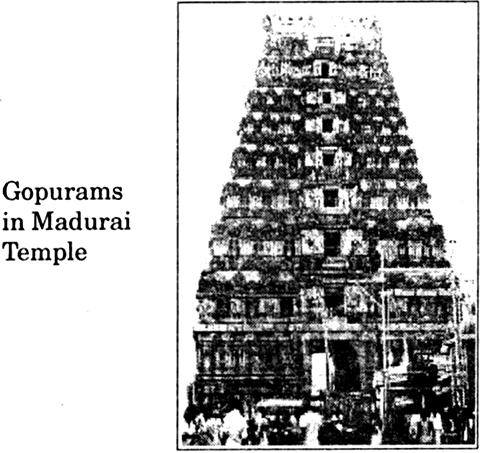An Imperial Capital : Vijayanagara
Explain any two features that were imbibed in the temple architecture under the rulers of Vijayanagara.
(i) The temples had large establishments. They had gopurams and royal gateways.

(ii) The temples also had mandapas or pavilions, besides long and pillared corridors. These corridors often ran around the shrines.
Sponsor Area
Some More Questions From An Imperial Capital : Vijayanagara Chapter
Discuss whether the term “royal centre” is an appropriate description for the part of the city for which it is used
What does the architecture of buildings like the Lotus Mahal and elephant stables tell us about the rulers who commissioned them?
What are the architectural traditions that inspired the architects of Vijayanagara? How did they transform these traditions?
What impression of the lives of the ordinary people of Vijayanagara can you cull from the various descriptions in the chapter?
On an outline map of the world, mark approximately Italy, Portugal, Iran and Russia.Trace the routes the travellers mentioned on p.176 would have taken to reach Vijayanagara.
Find out more about any one of the major cities which flourished in the subcontinent during c. fourteenth-seventeenth centuries. Describe the
architecture of the city. Are there any features to suggest that these were political centres? Are there buildings that were ritually significant? Is there
an area for commercial activities? What are the features that distinguish the urban layout from that of surrounding areas?
Visit a religious building in your neighbourhood. Describe, with sketches, its roof, pillars and arches if any, corridors, passages, halls, entrance, water supply, etc. Compare these features with those of the Virupaksha temple. Describe what each part of the building is used for. Find out about its history.
Give a brief description of Lotus Mahal, situated in the Royal Centre in the Vijayanagara empire.
Mention two characteristic features of the temple complexes in Vijayanagara.
Mention any two ceremonies performed on the occasion of Mahanavami dibba.
Mock Test Series
Sponsor Area
NCERT Book Store
NCERT Sample Papers
Sponsor Area